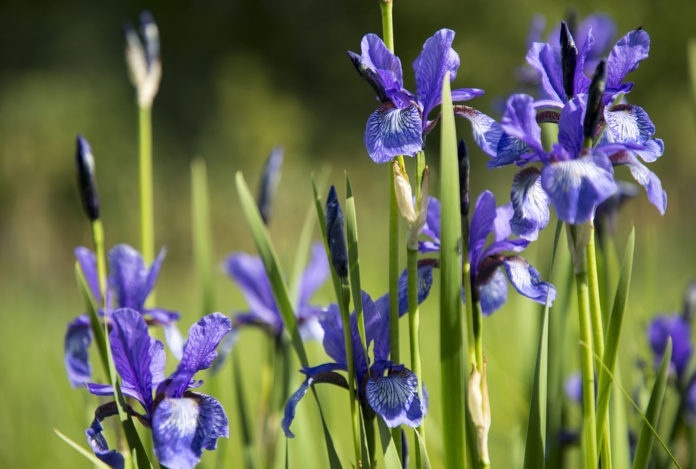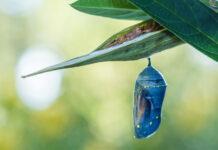This is the third piece in a series about pollinator gardens. In the previous two installments, Molly introduced us to pollinator gardens and gave us a detailed look at the life cycle of Monarch butterflies.
It’s a bit like following a hummingbird; she flits through the garden, touching lightly on plant leaves and flower petals, rattling off their names at the speed of wings, and zoom, she’s off. Karen Wright is at home among the plants.
I met up with her at her cabin on Lake Washington. Even from the driveway, her gardening skills were evident. There was a bloom in every corner, not a weed in sight, and the elephant ears dwarfed my car. Karen is a Master Gardener, and it showed.
But we were not there to smell the roses. Karen led me around the house, past roses, ferns and native ginger, naming the species as we went. On the hillside leading down to the shore, she showed me the crude terracing she had created with fallen branches, nothing going to waste. The terracing held up deep rooting plants she installed, like Dwarf Bush Honeysuckle, which will take hold of the hillside and prevent erosion.
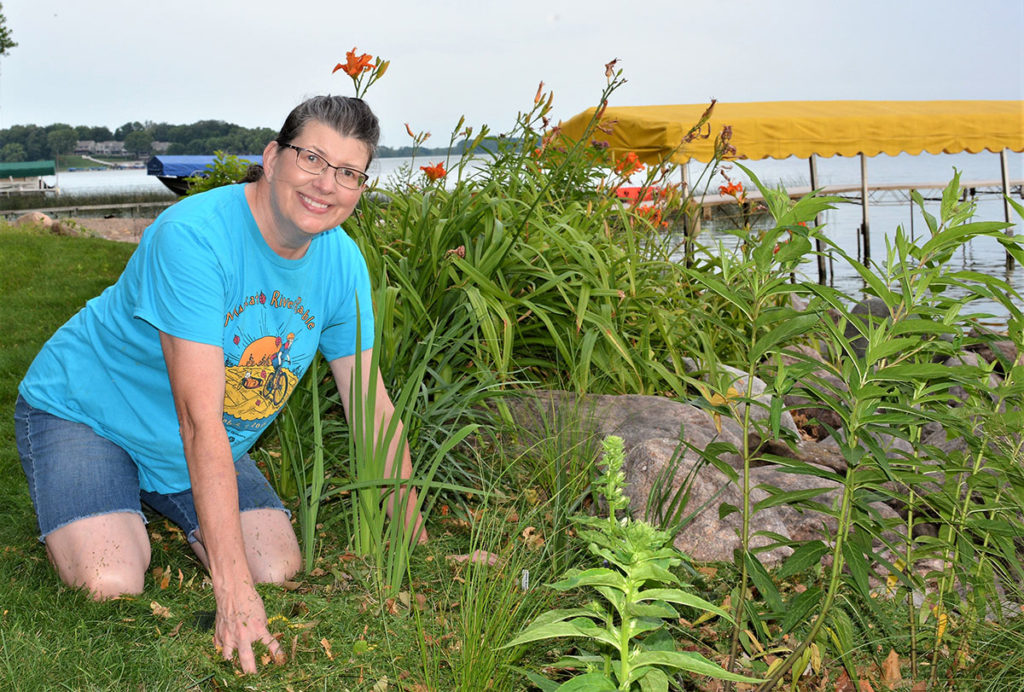
“Dwarf Bush Honeysuckle blooms early, and it’s continuous,” she explained. “The pollinators can use it for months.”
We reached the bottom of the hill and Karen’s latest masterpiece: Fifty-five feet of sustainable shoreline.
She flits through the garden, touching lightly on plant leaves and flower petals, rattling off their names at the speed of wings, and zoom, she’s off. Karen Wright is at home among the plants.
This shoreline was made possible after Karen received a $350 grant through the Lawns to Legumes program. When she initially applied, she didn’t think she’d get it. After all, there were nearly 8,000 applicants. But Karen was one of the residents selected for an individual grant.
“I was going to do it someday,” she said. “Getting the grant was the incentive I needed to actually start now.”
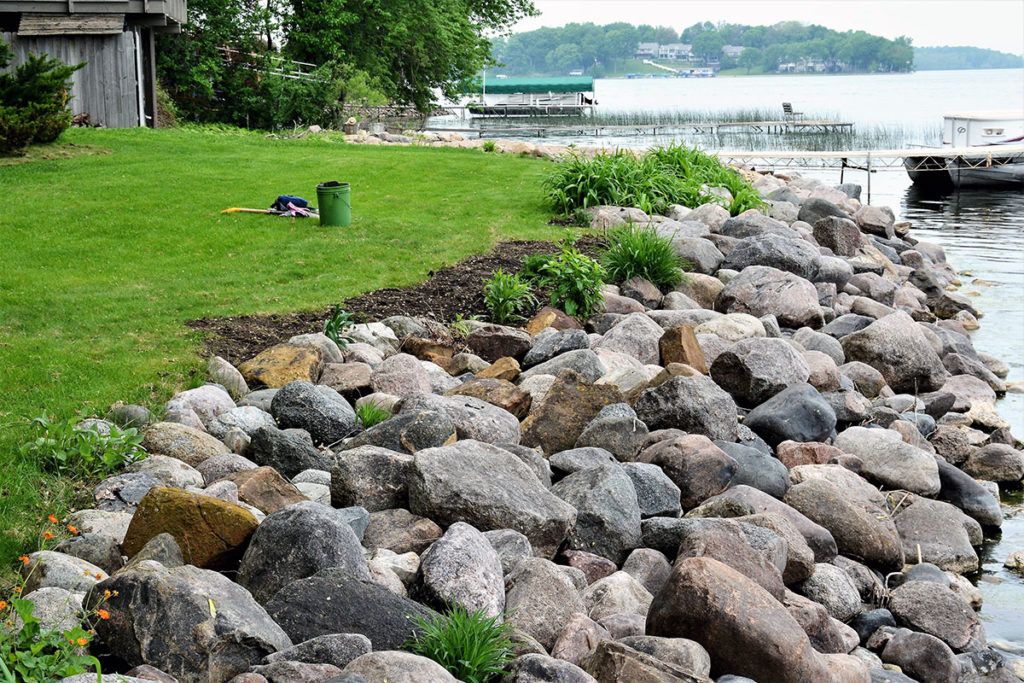
Preserving her passion
Karen applied for this grant for many reasons. As a Master Gardener, she’s well aware of the pollinators and their needs. But she also said the lake water is clearly in need of a change. In the early spring, the water is so clean and clear that she can see to the bottom. By the time I came by to take a look, the water was green and murky. Karen pointed out foam and algae.
“My kids don’t want to swim in this,” she said.
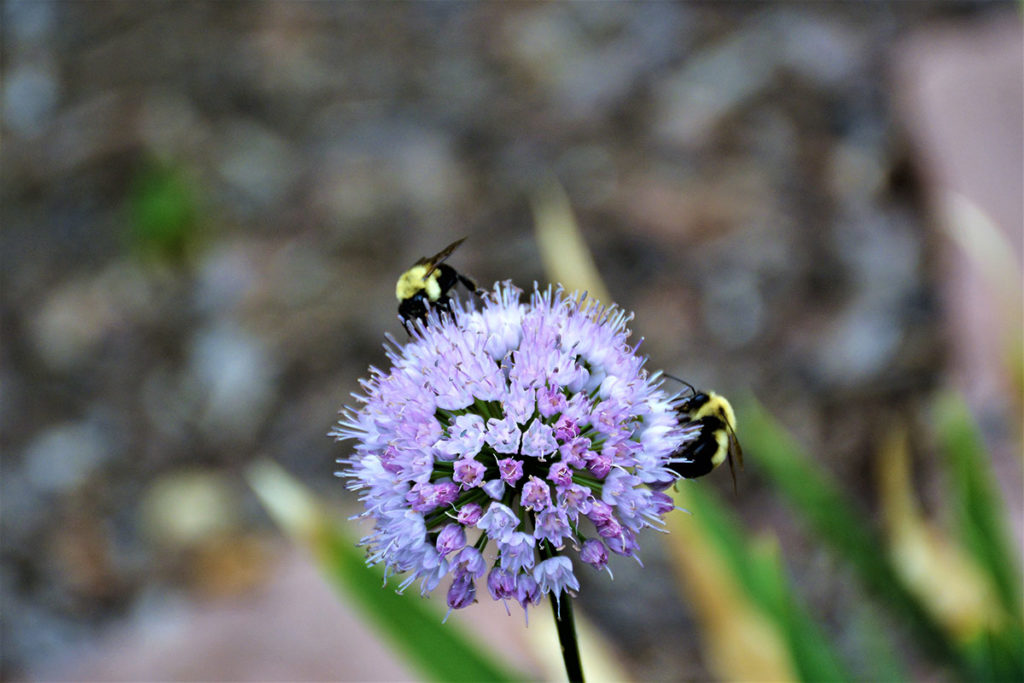
This shoreline project has many purposes. The deep rooting plants will slow the flow of rainwater to the lake, which helps prevent erosion. That rain flow is also usually carrying contaminants from the nearby farm fields, which turn the water green and murky. The plants help filter out these contaminants, unlike shallow rooted grass. And, of course, these plants are pollinators and will provide resources for pollinators, particularly the rusty patched bumble bee. Karen said she selected a garden specifically to cater this pollinator’s needs.
“It’s the state bee,” she explained. “A lot of people don’t know that.”
It is also on the endangered species list.
Hard work
Winning the grant was just the first step. Karen had to complete the Blue Thumb “Resilient Yards” webinar and meet with a coach, Shane Bugeja, the Extension Educator for Blue Earth and Le Sueur Counties. Then she had to provide receipts and document her work. Hours and hours of labor went into the shoreline, and she’s not done yet. Eventually, Karen wants all 125 feet of shoreline to be planted.
Karen acquired most of these shoreline plants online through Prairie Nursery, which provides pre-planned garden kits. The business specializes in different purposes, like rain gardens or gardens for specific pollinators. Karen got the shoreline kit.
“It’s kind of a no-fail thing,” she said.
Karen’s shoreline project isn’t just good for the environment; it’s also beautiful. It’s designed to constantly provide blooms for pollinators, so there is always something eye-catching to enjoy.
But the pre-made kit didn’t take away from the countless hours Karen has spent removing sod, planting and weeding. Organic growing takes sweat and passion.
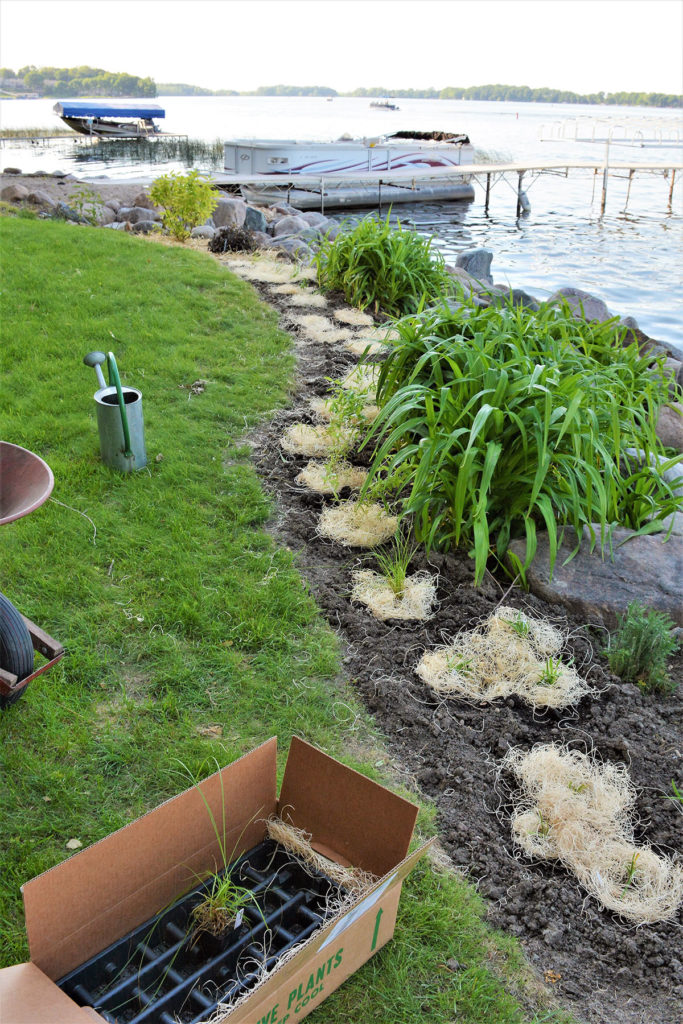
“Hours… Hours!” she said with a laugh. She showed me red milkweed and wild iris. “Oh, look!”
We paused to watch as a bee stopped on the great blue lobelia. Karen’s shoreline project isn’t just good for the environment; it’s also beautiful. It’s designed to constantly provide blooms for pollinators, so there is always something eye-catching to enjoy. Neighbors have complimented the work.
The Rogue Pruner
We headed back up to the house, while she pointed out her ginger and violets and the invasive buckthorn she was working to remove, weeding all the way.
“In my neighborhood, they called me the Rogue Pruner,” she said, and I believed it.
The yard looked spotless to me, but she expertly plucked another hidden weed. I asked for her advice to fellow yard owners.
I used to have the services come out, but then I got this place and really started thinking about water quality. So, before you have fertilizers or sprays in your yard, get the soil test. Most likely, you don’t need it.Karen Wright
“I used to have the services come out, but then I got this place and really started thinking about water quality,” she replied. “So, before you have fertilizers or sprays in your yard, get the soil test. Most likely, you don’t need it. It’s about a new mindset. Do you need a golf course lawn? Clover is great for the bees. Can you live with it?”
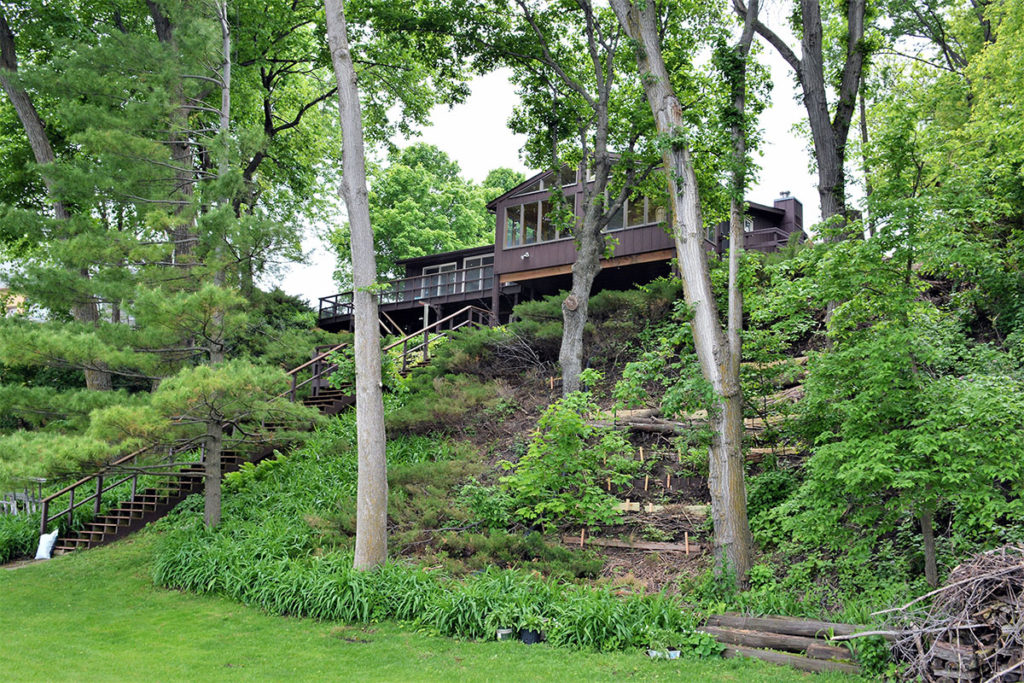
She said at the very least, if you must spray, spray in the evening when the bees aren’t actively out, or spray only in some areas but not the entire yard.
I got ready to leave, but not before Karen plucked a James Galway rose from the bush as a souvenir. Supposedly, they can have up to 130 petals, but I quickly lost count.
More resources
Besides the individual grants like the one Karen received, Lawns to Legumes also offers Demonstration Neighborhood grants, intended for “community projects intended to enhance pollinator habitat in key corridors, raise awareness for residential pollinator protection, and showcase best practices,” according to the Board of Water and Soil resources.
If you’re interested in applying for the Lawns to Legumes grant, you can sign up on Blue Thumb to be notified when the next application period opens. If you’d like to explore your planting options, check out Prairie Nursery or speak with a local grower.
Minnesota’s water and pollinators face countless threats. But on 55 feet of shoreline, change is already taking root.
~~~
Green Earth is a regular column by Molly Butler focusing on a few of her passions: nature and the environment, with an emphasis on Blue Earth and Nicollet Counties.

